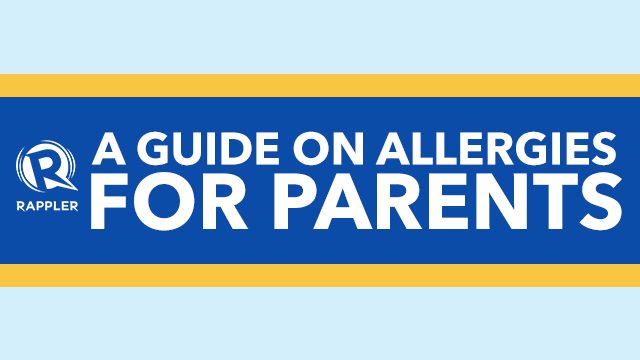SUMMARY
This is AI generated summarization, which may have errors. For context, always refer to the full article.

MANILA, Philippines – One loud sneeze is usually all it takes for you to start wondering if your child is allergic to something. Allergies manifest through symptoms such as rashes, watery eyes, and even abdominal pain. But what is causing your little one to react this way?
Allergic reactions happen when the body’s immune system wrongly detects harmless things as threats. Allergies are usually inborn, but being pre-disposed to them does not automatically mean your child will experience allergic reactions. At the same time, it is also possible for your child to develop allergies that were not present before, especially if exposed to an allergen while his or her immune system is down.
Because of this, it’s important to develop a foundation of good health as early as possible (in a Twitter conversation hosted by Rappler, many parents echoed the same opinion).
Be mindful of what your child eats and does on a regular basis. This way, you can keep his immune system up while taking note of his reactions to possible sources of allergies.
To help you, here’s a practical reference to common allergens and how to prevent them from wreaking havoc in your home.

Protein and allergies
In line with mainting your child’s overall health, it’s a good idea to know more about protein, a nutrient that’s essential to your child’s physical development. It’s responsible for muscle growth and the maintenance of proper body functions. However, some forms of protein are also allergens. Given its importance, parents should make sure that their child takes the right kind of protein and in the proper amount.
Protein allergies are a common result of taking in whole or intact proteins at an early age when the child’s body is not yet ready to process them. Optimized protein has all the essential amino acids to aid your child’s growth at the right levels. This helps reduce the risks of obesity, heart disease, and diabetes, which are found to be the result of taking high amounts of protein when the body is not yet ready for it.
To help prevent the onset of allergies, parents can introduce partially hydrolyzed whey proteins in their child’s diet. These smaller bits of protein are designed to help the child get used to protein and minimize any reactions that form allergies. – Rappler.com
Help build a strong foundation for your child’s future with NANKID® OPTIPRO® HW FOUR. It contains optimized protein for optimal development and digestion advantage. It is scientifically formulated with elements that protect and support your child’s development. For more information, visit http://rethinkprotein.com.ph
Add a comment
How does this make you feel?
There are no comments yet. Add your comment to start the conversation.